Enhancing Inventory Management Through 3PL Integration
Efficient inventory management is more crucial today than ever, thanks to our modern landscape requiring a highly-competitive and highly-adaptable supply chain. At its core, inventory management involves overseeing the flow of goods from manufacturers to warehouses and, ultimately, to the point of sale. It ensures that the right products are available in the right quantities, at the right time, and in the right place—balancing supply with demand.
Effective inventory management is the backbone of any successful supply chain. It helps companies minimize costs by reducing excess stock and avoiding stockouts, which can lead to lost sales and dissatisfied customers. In an increasingly complex global marketplace, the ability to manage inventory efficiently can make the difference between staying competitive and falling behind.
One powerful way to enhance inventory management is through integration with a Third-Party Logistics (3PL) provider. By leveraging the expertise, technology, and infrastructure of 3PLs, businesses can streamline their inventory processes, improve accuracy, and respond more quickly to market changes. In this blog post, we’ll explore how integrating 3PL services into your operations can transform your approach to inventory management, helping you achieve greater efficiency and better serve your customers.
Why Integrate to Improve Inventory Management - By The Numbers
- Improved Inventory Accuracy: Companies that integrate 3PL services report an average inventory accuracy improvement of 20% to 30%, according to a study by the Council of Supply Chain Management Professionals (CSCMP).
- Cost Savings: Businesses that utilize 3PL providers experience average logistics cost savings of 13%. A report by Armstrong & Associates found that companies save an average of 13% on their logistics costs by outsourcing to 3PL providers, primarily due to more efficient transportation and warehousing operations.
- Increased Order Fulfillment Speed: 3PL integration can reduce order cycle times by 15% to 30%. A study by Capgemini showed that companies leveraging 3PL services are able to significantly reduce their order cycle times, leading to faster delivery times and improved customer satisfaction.
- Enhanced Scalability: 90% of companies that use 3PLs report improved scalability in their supply chains. Research by Inbound Logistics highlights that 90% of businesses using 3PL services benefit from increased flexibility and scalability, allowing them to better handle peak seasons and demand fluctuations.
- Reduction in Stockouts: Companies using 3PL services report a reduction in stockouts by up to 50%. The 2023 Third-Party Logistics Study by CSCMP noted that the real-time inventory tracking and advanced forecasting capabilities of 3PL providers can reduce stockouts significantly, improving overall supply chain performance.
- Improved Customer Satisfaction: Businesses that integrate 3PL services experience an average improvement in customer satisfaction scores by 10% to 20%. A report by Gartner revealed that companies using 3PL providers saw significant improvements in customer satisfaction, attributed to faster delivery times, better order accuracy, and improved service levels.
- Better Demand Forecasting: 73% of companies using 3PL services report improved demand forecasting accuracy. According to a survey by Deloitte, 73% of businesses that integrated 3PL services saw improvements in their demand forecasting capabilities, leading to more efficient inventory management.
- Reduced Overhead Costs: 3PL integration can reduce warehousing overhead costs by up to 25%. A study by Armstrong & Associates found that outsourcing warehousing and inventory management to 3PL providers can reduce overhead costs by up to 25%, due to more efficient use of space and labor.
Understanding the Role of 3PL in Inventory Management
As businesses expand and supply chains become increasingly complex, managing inventory efficiently becomes a more daunting task. This is where Third-Party Logistics (3PL) providers come into play. 3PLs offer a range of services that go beyond simple storage and transportation, becoming an integral part of a company’s overall supply chain strategy. To fully appreciate how 3PL integration can enhance inventory management, it’s essential to understand the multifaceted role these providers play.
What Is A 3PL?
Third-Party Logistics (3PL) refers to the outsourcing of various logistics functions to an external service provider. These functions can include warehousing, distribution, order fulfillment, transportation, and even certain aspects of inventory management. By handing over these logistics tasks to a specialized 3PL provider, companies can focus on their core business activities while benefiting from the expertise and infrastructure that 3PLs bring to the table.
Services Offered by 3PLs
3PL providers offer a comprehensive suite of services tailored to meet the unique needs of different businesses. Here’s how some of these services directly impact inventory management, including warehousing and storage, inventory control and optimization, order fulfillment, distribution and transportation, and reverse logistics. These services can transform the way businesses manage their inventory, leading to greater efficiency, cost savings, and the ability to adapt to a rapidly changing market.
Why 3PLs Are Essential for Modern Inventory Management
In today’s global marketplace, the ability to adapt quickly to changes in demand, supply chain disruptions, or shifts in consumer preferences is crucial. 3PLs provide the flexibility and expertise needed to navigate these challenges. By integrating 3PL services into their operations, businesses can achieve several key benefits in inventory management:
- Scalability: As your business grows or experiences seasonal fluctuations, a 3PL can easily scale its services to match your changing needs. This flexibility helps prevent issues like overstocking during low demand periods or stockouts during peak seasons.
- Cost Savings: Operating your own warehouses and managing logistics internally can be expensive. 3PLs can often perform these tasks more cost-effectively due to their specialization and economies of scale. These savings can be passed on to your customers or reinvested in other areas of your business.
- Technology and Innovation: 3PL providers invest heavily in the latest technology, from warehouse management systems to data analytics and automation. By partnering with a 3PL, your business gains access to these cutting-edge tools without the upfront investment.
- Focus on Core Competencies: By outsourcing logistics and inventory management to a 3PL, businesses can focus more on their core competencies, such as product development, marketing, and customer service. This shift in focus can lead to better overall business performance.
Benefits of 3PL Integration for Inventory Management
Integrating 3PL services into your inventory management strategy can offer significant advantages, helping businesses streamline operations, reduce costs, and improve overall efficiency. As supply chains become more complex, the ability to manage inventory effectively becomes a competitive differentiator. Here’s a closer look at the key benefits of 3PL integration for inventory management:
1. Real-Time Inventory Tracking
One of the most significant benefits of partnering with a 3PL provider is access to advanced technology that enables real-time inventory tracking. 3PLs use sophisticated inventory management systems (IMS) that provide real-time visibility into stock levels across multiple locations. This capability allows businesses to monitor inventory as it moves through the supply chain, reducing the risk of stockouts or overstocking and enabling more accurate demand forecasting.
- Improved Accuracy: With real-time data, businesses can maintain more accurate inventory records, leading to better decision-making and fewer discrepancies between physical and recorded inventory.
- Enhanced Visibility: The ability to track inventory in real-time across different stages of the supply chain provides greater visibility, helping businesses respond quickly to changes in demand or supply chain disruptions.
2. Scalability and Flexibility
3PL integration offers unmatched scalability and flexibility, allowing businesses to adapt their inventory management practices to changing market conditions, seasonal fluctuations, or rapid growth. Whether you need additional warehouse space, faster distribution, or specialized handling, 3PL providers can adjust their services to meet your evolving needs.
- Capacity Management: During peak seasons or periods of rapid growth, 3PLs can quickly scale up their operations to accommodate increased inventory volumes, ensuring that your business can meet customer demand without delays.
- Flexibility in Operations: If your business requires temporary storage or needs to expand into new markets, a 3PL provider can offer flexible solutions that adjust to your specific requirements without long-term commitments.
3. Cost Efficiency
Managing inventory internally can be costly, especially when considering the expenses associated with warehousing, labor, technology, and transportation. By outsourcing these functions to a 3PL provider, businesses can reduce overhead costs and improve their bottom line.
- Reduced Overhead: 3PL providers offer economies of scale, allowing them to spread costs across multiple clients. This often results in lower costs for warehousing, transportation, and labor compared to managing these operations in-house.
- Optimized Inventory Levels: With the help of 3PL’s advanced inventory management systems and expertise, businesses can maintain optimal inventory levels, reducing the costs associated with excess stock and minimizing the risk of stockouts.
4. Access to Advanced Technology
3PL providers invest heavily in cutting-edge technology to enhance their services. By integrating 3PL into your operations, your business gains access to this technology without the need for significant capital investment.
- Automation: Many 3PLs use automation in their warehousing and distribution processes, including automated picking, packing, and shipping. This reduces human error, speeds up operations, and lowers labor costs.
- Data Analytics: Advanced analytics provided by 3PLs can help businesses gain insights into inventory trends, customer behavior, and supply chain performance. These insights enable more informed decision-making and proactive inventory management.
- Integrated Systems: 3PL providers often offer seamless integration with your existing systems, such as enterprise resource planning (ERP) software, ensuring that inventory data flows smoothly across your organization.
5. Improved Customer Service
Effective inventory management is crucial for maintaining high levels of customer satisfaction. With the help of 3PL integration, businesses can improve order accuracy, reduce lead times, and ensure that products are available when customers need them.
- Faster Fulfillment: 3PLs streamline the order fulfillment process, enabling faster and more accurate delivery of products to customers. This is particularly important in today’s market, where customers expect quick and reliable service.
- Better Stock Availability: By optimizing inventory levels and distribution strategies, 3PLs help ensure that products are always available for customers, reducing the likelihood of lost sales due to stockouts.
6. Focus on Core Competencies
By outsourcing inventory management to a 3PL provider, businesses can free up valuable time and resources to focus on their core competencies, such as product development, marketing, and customer service. This allows companies to drive growth and innovation without being bogged down by the complexities of logistics.
- Resource Allocation: With logistics and inventory management in the hands of a trusted 3PL provider, businesses can allocate more resources to areas that directly contribute to their competitive advantage.
- Strategic Focus: Outsourcing operational tasks to a 3PL allows leadership to focus on long-term strategic goals rather than day-to-day logistics challenges.
7. Enhanced Risk Management
Inventory management involves various risks, including supply chain disruptions, fluctuating demand, and changes in market conditions. 3PL providers, with their extensive experience and resources, can help mitigate these risks.
- Contingency Planning: Many 3PLs have robust contingency plans in place to address unexpected events, such as natural disasters or supply chain interruptions. This reduces the impact of such disruptions on your inventory and ensures continuity of operations.
- Diversified Supply Chains: By leveraging the extensive networks of 3PL providers, businesses can diversify their supply chains, reducing reliance on a single supplier or region and mitigating risks associated with supply chain bottlenecks.
How to Successfully Integrate 3PL Services into Your Inventory Management
Integrating 3PL services into your inventory management strategy can lead to significant operational efficiencies and cost savings. However, to fully reap the benefits, the integration process must be handled carefully and strategically. Here’s a step-by-step guide on how to successfully integrate 3PL services into your inventory management.
1. Define Your Objectives and Requirements
Before embarking on 3PL integration, it’s crucial to have a clear understanding of your objectives and specific requirements. This will help you choose the right 3PL partner and ensure the integration aligns with your business goals.
- Set Clear Goals: Identify what you hope to achieve through 3PL integration—whether it’s reducing costs, improving delivery times, increasing inventory accuracy, or scaling operations. Having clear, measurable goals will guide the entire integration process.
- Assess Your Current Inventory Management: Evaluate your current inventory management practices, including systems, processes, and pain points. Understanding your existing setup will help you determine what aspects need improvement and how a 3PL can assist.
2. Select the Right 3PL Partner
Choosing the right 3PL provider is critical to the success of your integration. The right partner will not only meet your immediate needs but will also be able to grow with your business and adapt to future challenges.
- Evaluate Capabilities: Assess potential 3PL providers based on their capabilities, including warehousing, transportation, technology, and customer service. Make sure they have experience in your industry and can handle the specific needs of your business.
- Check References and Reputation: Look for reviews, testimonials, and case studies from other businesses that have worked with the 3PL provider. A provider with a strong track record and positive feedback is more likely to deliver reliable and quality services.
- Consider Technology and Compatibility: Ensure that the 3PL provider’s technology is compatible with your existing systems. Integration will be smoother if both parties use compatible platforms for inventory management, order processing, and communication.
3. Plan the Integration Process
Once you’ve chosen a 3PL partner, it’s essential to plan the integration process thoroughly. A well-thought-out plan will minimize disruptions and ensure a seamless transition.
- Create a Detailed Integration Plan: Outline each step of the integration process, from data migration to system testing. Define timelines, responsibilities, and key milestones to keep the project on track.
- Involve Key Stakeholders: Engage all relevant departments—such as IT, operations, procurement, and finance—in the planning process. Their input will help identify potential challenges and ensure that all aspects of the business are considered.
- Establish Clear Communication Channels: Effective communication is critical during integration. Set up regular meetings and updates with your 3PL provider to monitor progress, address issues, and ensure everyone is on the same page.
4. Integrate Technology Systems
One of the most challenging yet essential aspects of 3PL integration is the integration of technology systems. This step ensures that inventory data flows seamlessly between your business and the 3PL provider.
- Integrate Inventory Management Systems (IMS): Work with your 3PL provider to integrate your inventory management system with theirs. This integration will enable real-time data sharing, improve inventory accuracy, and streamline order processing.
- Automate Data Exchange: Automate the exchange of key data points, such as stock levels, order status, and shipping details, between your systems and the 3PL’s systems. This reduces manual entry, minimizes errors, and speeds up operations.
- Conduct Rigorous Testing: Before going live, test the integrated systems thoroughly. Conduct end-to-end testing to ensure that data flows correctly, processes are synchronized, and any potential issues are resolved.
5. Define Key Performance Indicators (KPIs)
Measuring the success of 3PL integration is essential to ensure that the partnership delivers the desired results. Establishing Key Performance Indicators (KPIs) will help you monitor performance and identify areas for improvement.
- Set Relevant KPIs: Choose KPIs that align with your business goals, such as order accuracy, on-time delivery rate, inventory turnover, and cost per unit shipped. These metrics will provide insight into the effectiveness of the integration.
- Regularly Review Performance: Schedule regular reviews with your 3PL provider to assess performance against the KPIs. Use these reviews to discuss any challenges, make adjustments, and optimize processes for better results.
- Adjust KPIs as Needed: As your business evolves, so too should your KPIs. Be flexible in adjusting your performance metrics to reflect changes in business priorities or market conditions.
6. Train Your Team
For 3PL integration to be successful, your internal team must be fully trained on the new processes, systems, and responsibilities.
- Provide Comprehensive Training: Offer training sessions for all employees who will interact with the 3PL provider or use the integrated systems. Ensure they understand how the integration works, what their roles are, and how to use the new technology.
- Encourage Collaboration: Foster a collaborative environment where your team works closely with the 3PL provider. Encourage open communication, knowledge sharing, and problem-solving to ensure a smooth transition.
- Monitor and Support: After the integration is complete, continue to monitor your team’s performance and provide ongoing support and training as needed. Address any issues promptly to prevent them from escalating.
7. Manage Change and Expectations
Change management is a crucial aspect of successful 3PL integration. Managing expectations and helping your team adapt to the new processes will ensure a smoother transition.
- Communicate the Benefits: Clearly communicate the benefits of 3PL integration to your team, including how it will improve efficiency, reduce workload, and enhance customer service. This will help build buy-in and reduce resistance to change.
- Manage Expectations: Set realistic expectations regarding the timeline, potential challenges, and outcomes of the integration process. Ensure that everyone understands that while integration offers significant benefits, it may also involve a learning curve and initial adjustments.
- Provide Ongoing Support: Offer continuous support to your team as they adapt to the new processes. Address any concerns, provide additional training if needed, and be open to feedback.
8. Continuously Improve and Optimize
3PL integration is not a one-time process; it requires ongoing monitoring and optimization to ensure continued success.
- Monitor Performance: Regularly track the performance of your 3PL integration against your KPIs and business objectives. Use this data to identify areas for improvement and make necessary adjustments.
- Optimize Processes: Work with your 3PL provider to continuously optimize processes, whether it’s improving order fulfillment times, reducing costs, or enhancing inventory accuracy.
- Stay Updated on Technology: As technology evolves, stay informed about new tools and systems that could further enhance your 3PL integration. Be open to adopting new technologies that offer additional benefits.
Case Study: Adidas Enhances Inventory Management Through 3PL Integration
Background: Adidas, one of the world’s leading sportswear brands, operates in a highly competitive and dynamic market. The company’s global supply chain is extensive, encompassing everything from raw material sourcing to manufacturing, warehousing, and distribution. As demand for Adidas products surged, particularly with the rise of e-commerce, the company faced significant challenges in managing its inventory across various regions. To maintain its competitive edge and meet consumer expectations for fast, accurate order fulfillment, Adidas needed to optimize its inventory management processes.
Challenges: Adidas’s supply chain complexity increased as the company expanded its global footprint. Managing inventory across multiple warehouses and distribution centers, while also ensuring timely deliveries to both retail partners and direct-to-consumer channels, became increasingly difficult. Some of the key challenges included:
- Inventory Visibility: With products stored across multiple locations, Adidas struggled with achieving real-time visibility into inventory levels, leading to inefficiencies and delays.
- Demand Fluctuations: The sportswear market is highly seasonal, with demand spikes around major sporting events, back-to-school periods, and holidays. Adidas needed a more flexible system to manage these fluctuations without overstocking or stockouts.
- Cost Management: High logistics and warehousing costs were eroding margins, making it crucial for Adidas to find ways to streamline operations and reduce expenses.
Solution: Integration with a 3PL Provider To address these challenges, Adidas decided to partner with a leading Third-Party Logistics (3PL) provider, CEVA Logistics. CEVA Logistics, known for its expertise in supply chain solutions, offered Adidas the advanced technology, infrastructure, and logistics services necessary to enhance its inventory management.
Implementation: The integration process involved several key steps:
- Advanced Warehousing Solutions: CEVA Logistics provided Adidas with state-of-the-art warehousing facilities equipped with advanced inventory management systems. These systems enabled real-time tracking of stock levels, significantly improving inventory accuracy and reducing the risk of stockouts or overstocking.
- Integrated Technology Systems: CEVA’s inventory management system was seamlessly integrated with Adidas’s existing enterprise resource planning (ERP) software. This integration allowed for the automated exchange of data, providing Adidas with a unified view of inventory across all locations.
- Flexible Distribution: CEVA’s extensive global network allowed Adidas to implement a more flexible distribution strategy. During peak demand periods, CEVA was able to scale up operations quickly, ensuring that products reached customers on time.
- Cost Optimization: By leveraging CEVA’s expertise in logistics, Adidas was able to optimize its transportation routes, reduce warehousing costs, and improve overall supply chain efficiency. This resulted in significant cost savings, which were reinvested into the business.
Results: The partnership with CEVA Logistics delivered substantial improvements in Adidas’s inventory management:
- Improved Inventory Accuracy: Real-time tracking and automated data exchange led to a 20% increase in inventory accuracy, reducing discrepancies and improving order fulfillment times.
- Enhanced Flexibility: Adidas was able to respond more effectively to demand fluctuations, reducing stockouts by 15% during peak seasons. The ability to scale operations quickly also helped the company maintain high levels of customer satisfaction.
- Cost Savings: Through optimized warehousing and transportation, Adidas achieved a 10% reduction in logistics costs, directly contributing to higher profit margins.
Conclusion: By integrating 3PL services from CEVA Logistics, Adidas was able to overcome significant challenges in its inventory management processes. The partnership not only improved inventory accuracy and flexibility but also led to substantial cost savings, helping Adidas maintain its competitive edge in the global sportswear market. This case study highlights the critical role that 3PL integration can play in enhancing inventory management and overall supply chain performance.
Potential Challenges and Solutions in 3PL Integration for Inventory Management
Integrating 3PL services into your inventory management strategy can yield significant benefits, but it’s not without challenges. Successfully navigating these obstacles requires careful planning, proactive problem-solving, and a clear understanding of the potential pitfalls. Here’s an exploration of some common challenges in 3PL integration and the solutions to address them.
1. Data Integration and System Compatibility
Challenge: One of the most common challenges in 3PL integration is ensuring that your existing systems, such as inventory management software and Enterprise Resource Planning (ERP) systems, are compatible with the 3PL provider’s technology. Data integration issues can lead to discrepancies in inventory records, delays in order processing, and communication breakdowns.
Solution:
- Thorough Assessment: Before selecting a 3PL provider, conduct a detailed assessment of both your current systems and the 3PL’s technology stack. Ensure that their systems can integrate seamlessly with your own.
- APIs and Middleware: Utilize Application Programming Interfaces (APIs) or middleware solutions to facilitate smooth data exchange between systems. These tools can help bridge any gaps between incompatible systems, ensuring real-time data synchronization.
- Testing and Validation: Conduct comprehensive testing before fully integrating systems. This includes running simulations to check for any data transfer issues, verifying the accuracy of inventory data, and ensuring that orders are processed correctly.
2. Loss of Control and Visibility
Challenge: Outsourcing inventory management to a 3PL provider can sometimes lead to a perceived or actual loss of control and visibility over your inventory. This can make it difficult to monitor stock levels, track orders, or respond quickly to issues.
Solution:
- Real-Time Reporting Tools: Choose a 3PL provider that offers real-time reporting tools and dashboards that provide comprehensive visibility into your inventory. These tools should allow you to monitor stock levels, order status, and other key metrics in real time.
- Establish Clear Communication Protocols: Set up clear communication protocols with your 3PL provider, including regular meetings, updates, and escalation procedures for addressing issues. This helps maintain a strong partnership and ensures that you stay informed about all aspects of your inventory.
- Collaborative Planning: Work closely with your 3PL provider to develop collaborative forecasting and planning processes. This ensures that both parties are aligned on inventory needs, demand forecasts, and operational goals.
3. Scalability Issues
Challenge: While 3PL providers are often chosen for their ability to scale operations, rapid growth or unexpected surges in demand can still pose challenges. If not properly managed, these issues can lead to stockouts, delayed deliveries, or increased costs.
Solution:
- Flexible Contract Terms: Negotiate flexible contract terms with your 3PL provider that allow for scalability. This could include provisions for additional warehouse space, increased labor, or expanded transportation services during peak periods.
- Demand Forecasting: Use advanced analytics and demand forecasting tools to predict periods of high demand and plan accordingly with your 3PL provider. This proactive approach can help ensure that your inventory levels are sufficient to meet customer needs without overburdening the supply chain.
- Redundancy Planning: Develop redundancy plans that include backup storage facilities, alternative transportation routes, or secondary 3PL providers. This ensures that your supply chain can handle sudden increases in demand without disruptions.
4. Cost Management
Challenge: While 3PL integration can lead to cost savings, managing those costs effectively can be challenging. Hidden fees, fluctuating logistics costs, and inefficiencies in the supply chain can erode the financial benefits of 3PL services.
Solution:
- Transparent Pricing Models: Work with your 3PL provider to establish a transparent pricing model that clearly outlines all costs associated with their services. Avoid contracts with vague terms or hidden fees.
- Regular Cost Reviews: Conduct regular cost reviews with your 3PL provider to identify areas where savings can be achieved. This might involve optimizing transportation routes, reducing storage costs, or renegotiating terms based on volume.
- Performance-Based Contracts: Consider setting up performance-based contracts with your 3PL provider, where part of their compensation is tied to meeting specific KPIs, such as cost savings, on-time deliveries, or inventory accuracy.
5. Risk Management and Compliance
Challenge: 3PL providers operate in a complex regulatory environment, and ensuring compliance with various regulations, such as customs, tariffs, and safety standards, can be challenging. Additionally, supply chain risks such as disruptions, delays, and security breaches need to be managed effectively.
Solution:
- Compliance Audits: Regularly audit your 3PL provider’s compliance with relevant regulations. This includes checking their adherence to industry standards, customs regulations, and safety protocols.
- Risk Mitigation Strategies: Develop comprehensive risk mitigation strategies that include contingency planning, insurance coverage, and emergency response protocols. Work with your 3PL provider to identify potential risks and establish plans to address them.
- Continuous Monitoring: Use technology tools to continuously monitor your supply chain for potential risks, such as delays, disruptions, or security breaches. Early detection allows for quicker response and minimizes the impact on your inventory management.
6. Cultural and Operational Differences
Challenge: Differences in company culture, operational practices, and business priorities between your organization and the 3PL provider can lead to misunderstandings, inefficiencies, and conflicts.
Solution:
- Cultural Alignment: Choose a 3PL provider whose company culture and values align with your own. This can lead to a more harmonious partnership and smoother integration.
- Standardized Processes: Work with your 3PL provider to standardize key operational processes, ensuring that both parties follow the same procedures for inventory management, order processing, and communication.
- Regular Training and Collaboration: Foster a collaborative environment by organizing regular training sessions, workshops, and joint planning meetings. This helps both teams understand each other’s workflows, expectations, and priorities.
Get a Free Integration Consultation from Nautical’s Tech Experts
We specialize in providing custom integration solutions tailored to the unique needs of fulfillment companies. Our expertise in seamlessly integrating Warehouse Management Systems (WMS) and Order Management Systems (OMS) can streamline your processes, reduce errors, and enhance overall productivity.
Don’t let outdated systems hold you back. Contact us today to discover how our cutting-edge integration solutions can revolutionize your pick and pack operations. Let us help you achieve faster order processing, improved accuracy, and a superior customer experience.
Get in touch now to schedule a consultation and start your journey towards operational excellence. Together, we can build a smarter, more efficient fulfillment process that drives success and growth for your business.




